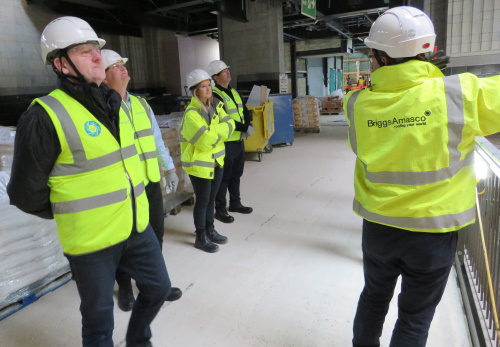Gender Imbalance should be no barrier to Women making their mark in Construction
“Women account for a disappointingly small percentage of the UK construction workforce (circa 13%). But rather than seeing it as a barrier to joining the industry, women could perhaps use their poor representation as a positive. It means there’s plenty of opportunity for the right female candidate to make their mark on the industry and blaze a trail for others to follow.
I always knew I wanted to do something in construction. But for girls, working in the building sector wasn’t presented as a career option at school; it was always seen as a boy’s thing. So, subconsciously, I kind of got the message that it would be off limits to me.
I don’t have any doubts about the career path I’m taking in construction. I’d just like to keep moving up. I’m in my final year at Reading University and once I finish, I’ll be taking my Assessment of Professional Competence (APC). Then I’d like to become a fully-qualified chartered surveyor before moving on to commercial management or something like that. So, I definitely want to stay within the construction sector.”
Learning curve fulfilled with on-site experience
“I’m in my final year at Reading University where I’m studying for a Bachelor of Science degree in Quantity Surveying. A friend initially persuaded me to take up the course. I was one of only 10 women, out of 150 male students in my year, to enrol for the combined module in Quantity Surveying, Construction Management and Building Surveying. My studies were combined with a six-month work placement at BriggsAmasco. The assignment gave me valuable site experience. I was based at London’s Battersea Power Station where BriggsAmasco’s waterproofing teams were involved in the site’s redevelopment into one of the capital’s most desirable residential/commercial hubs.
Admittedly, finding myself in a huge, bustling, male-dominated construction environment was daunting at first. I wasn’t very confident ‘cause I was never sure that I was saying the right thing. It didn’t help that I encountered few other women on site. I saw one female construction manager at Battersea and quite a few of the architects were women. But apart from that…”
Nerves aside, I learnt so much by meeting and speaking to a lot of people from different trades during my Battersea work placement. The site experience itself was incredibly enjoyable.”
“Based on my experience, I’d advise any career-minded women stepping into a live building environment for the first time to have belief in themselves and just go for it. You can’t hold back. Battersea was a high-pressure job. But the longer I was there, the more responsibility I was given and the more I enjoyed the challenge. You have to have strength in your belief that as a woman, you bring as much value to the construction industry as a man does.
In total, I’ve been involved in 10 building projects as part of my BriggsAmasco work experience programme. The company’s culture of inclusivity and diversity across all levels of the business has definitely helped me make the most of the opportunities I’ve been given. Everybody within the company has been really supportive, giving me help when I need it. They’ve also given me a lot of responsibility, so I don’t feel like I’m being babysat.”
Early engagement key to addressing gender imbalance
“In terms of addressing the industry’s gender imbalance, I think earlier engagement is needed to give more women a start in construction. Building companies, for example, should attend more recruitment events in places such as schools where students will be focused on their career and what to make of it. Companies should be saying to male and female school leavers, ‘Come and work for us’ and impress upon students, particularly girls, that a career in construction is possible.”
“It’s certainly working for me.”
Hannah Lamming Trainee Quantity Surveyor

